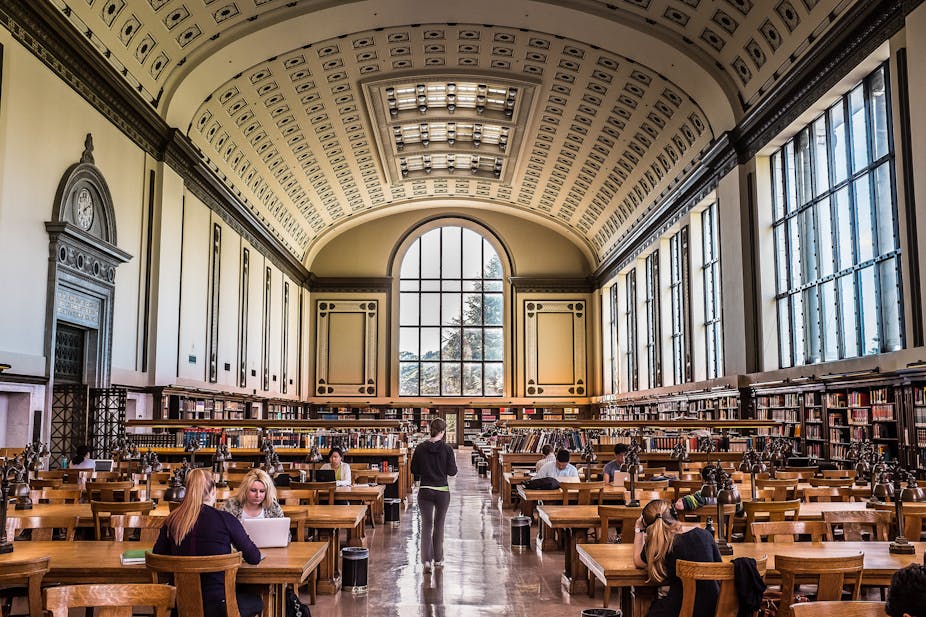Even before Jacqueline Ho enrolled in her first environmental studies course at college, her thinking about climate change had been shaped during her years growing up in Singapore reading books by the environmental writer and activist Bill McKibben.
At college, ideas first planted by McKibben were reinforced in courses where she read classics by Aldo Leopold and Garrett Hardin, along with recent books by Van Jones and Elizabeth Kolbert.
With these authors anchoring her understanding, it was easy for Ho to believe about climate change “that fossil fuel corporations were to blame, that we had a suite of low-carbon technologies we could deploy immediately, and that grassroots solutions held promise,” she recalls.
Yet only after taking an upper-level political science course on renewable energy and completing a summer fellowship with the Breakthrough Institute, an environmental think tank, was Ho introduced to alternative ways of thinking about climate change as a social problem and the possible solutions.
“I came to see the transition to a clean-energy economy as an issue requiring technological innovation and deployment, in addition to simply being caused by insufficient climate awareness or the inefficient pricing of fossil-based energy,” she writes in a new co-authored study in the Journal of Environmental Studies and Sciences.
“Nuclear power, an energy solution I seldom encountered in my classes except in the context of the negative health impacts of uranium mining, became a default alternative energy option in my mind,” she writes.
Today, several core concepts and insights from her introductory courses continue to guide her work as a researcher at Resources for the Future, an environmental economics think tank. “Yet, in many ways, I would have appreciated being exposed to a greater diversity of perspectives and solutions earlier in my education so that I could have learned to wrestle with these controversial perspectives alongside my environmentally minded peers,” she writes.
Influencing generations of students
Motivated by her experience, in the recent study, Ho and Eric Kennedy (a doctoral student at Arizona State University) analyzed 22 syllabi from introductory environmental studies courses taught at top-ranked North American research universities and liberal arts colleges. They recorded course descriptions, objectives, activities, and readings according to specific themes, topics, and perspectives.
Of the 22 syllabi assessed, less than half explicitly mentioned the importance of critical thinking or exposing students to competing perspectives. Only 10 made any reference to the fact that even among those advocating for action to address a problem like climate change, there are competing narratives about the major societal challenges, the possible technological solutions, and the political strategies needed.
Instead, in most cases, diverging views on climate change were defined relatively simplistically in terms of the clash between mainstream scientists and the false claims of climate “deniers.”
To more formally assess the diversity of perspectives offered about climate change, Kennedy and Ho applied a typology that I developed in a 2014 paper categorizing key differences among three distinct groups of public intellectuals arguing for action on the issue (see table, below).

In defining the social and political implications of climate change, the three groups of intellectuals featured in the table employ unique discourses, narratives, and frames of reference. These discourses help catalyze ways of thinking that bind otherwise disconnected generations of students, academics, advocates, and journalists into a shared view of climate change as a social problem.
Despite their usefulness in making sense of complexity and coordinating strategy, these discourses, if not consistently re-assessed and critically evaluated, can also lock in powerful forms of groupthink that derail efforts to effectively address climate change.
Courses in environmental studies programs should provide essential formative experiences where students engage in critical assessment, cross-learning, and the integration of perspectives about climate change and other environmental problems.
But Kennedy and Ho’s analysis indicates that many courses fall short of these important objectives.
Of the 14 classes that assigned specific readings on climate change and energy, nine assigned at least one reading from the writers listed in the table, reflecting the influence and reach of high-profile intellectuals like Bill McKibben.
Yet, only two syllabi included voices from two of the groups of climate thinkers, and only one class featured all three. The remaining courses only included readings from a single perspective. Only one syllabus focused on adaptation and resilience as an important policy response to climate change.
Promoting critical reflection and learning
Given the small sample size used in the study, Kennedy and Ho intend their research to be exploratory rather than conclusive. However, their initial analysis does suggest that the selective framing of climate change in some of the courses they analyzed could encourage students to focus on the “catastrophic consequences of climate change, climate denial among politicians and the public, pricing carbon, the intergenerational ethics of climate change, and the potential for currently available low-carbon technologies to meet our energy needs.”
Each of these are important dimensions of the problem, yet they are not the only considerations that should inform the outlook of students.
Potentially overlooked are disagreements over the proper relationship between humans and nature in the Anthropocene, the role of government spending and planning (rather than the market) in driving technological innovation, the need for investments in nuclear energy and carbon capture and storage (to complement renewables), or policy actions that make society and ecosystems more resilient to climate impacts.
(See for example the recent Ecomodernist Manifesto and related debate for more discussion of these themes.)
Kennedy and Ho are clear that they are not recommending that environmental studies courses “teach false or manufactured controversies (ie, climate change denial) nor abdicate a responsibility to study and articulate concerns about environmental impacts.”
Instead, their analysis underscores why environmental studies courses should explicitly “acknowledge the existence of diverse perspectives on environmental issues, and balance perspectives and discourses with critical counterpoints.” This should include teaching about “the use and misuse of science in political debates not only in the context of climate denial, but also as it applies to evaluating possible strategies or energy options.”

